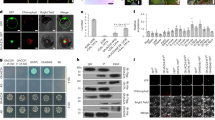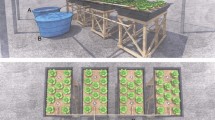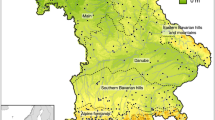Abstract
Empoasca lybica de Berg., a pest of cotton in the Sudan Gezira Scheme, invades the seedling crop early in September, the infestation normally reaching its maximum intensity in the last half of November. Hanna1 records that peak populations of this insect are affected by rainstorms of 10 mm. and more in July and August as well as by dust storms in September. Field observations by Cowland and Hanna2 suggest that populations upon cotton are also affected by rainstorms in September. Rainstorms, probably because of the mud which splashes on to the lower leaves, reduce the number of jassids infesting the cotton. Those findings which concerned the direct effect of rainstorms upon jassids at nine sites in the northern part of the Sudan Gezira were not reported by Hanna1 in his published paper on rainfall and jassid numbers.
This is a preview of subscription content, access via your institution
Access options
Subscribe to this journal
Receive 51 print issues and online access
$199.00 per year
only $3.90 per issue
Buy this article
- Purchase on SpringerLink
- Instant access to full article PDF
Prices may be subject to local taxes which are calculated during checkout
Similar content being viewed by others
References
Hanna, D., Bull. Ent. Res., 41 (2), 339 (1950).
Cowland, J. W., and Hanna, A. D., Ann. Rep. Res. Div. Min. Agric. Sudan Govt., 1948/49, p. 106 (1951).
Author information
Authors and Affiliations
Rights and permissions
About this article
Cite this article
GOODMAN, A., TOMS, A. Effect of Rainstorms upon the Cotton Jassid in the Sudan Gezira. Nature 178, 436 (1956). https://doi.org/10.1038/178436a0
Issue date:
DOI: https://doi.org/10.1038/178436a0



